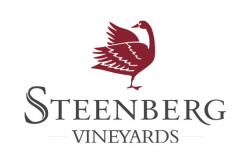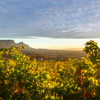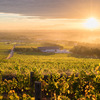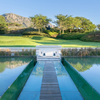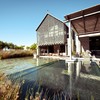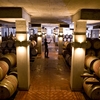Steenberg
Steenberg is located in the historic Constantia valley. The valley, which falls within the Cape Peninsula district, was the site of Simon van der Stel's 17th-century wine farm and the origin of the Constantia dessert wines which became famous throughout Europe during the 18th century. Rooted in ancient soils, the vineyards climb up the east-facing slopes of the Constantiaberg, where the vines benefit from the cool sea breezes blowing in from False Bay. The ward receives about 1 000mm of rain annually, making irrigation unnecessary, and has a mean February temperature of 20.6°C. There are only a handful of cellars in this premier ward, where the cool climate favours the production of white wines, notably Sauvignon Blanc, and where the tradition of producing remarkable wines since 1685 continues.
Philosophy
Steenberg Cellar Master Elunda Basson is an accomplished winemaker and respected specialist of her craft. She joined Steenberg Vineyards in June 2019 at the pinnacle of an illustrious career spanning over two decades making still and sparkling wines for leaders in the industry.
Tasked with the entire winemaking operation at this landmark wine farm in the Constantia Wine Valley, Elunda is supported by an experienced viticulture and cellar team who share her deep understanding of the importance of terroir driven wines.
Johann De Swardt, Farm Manager has been nurturing and tending to our vineyards since 1999, something which he is passionate about. Johann has an emotional dedication to animals and nature which is bred deeply within him – something a true farmer cannot prosper without.
Johann’s philosophy is: “to have a winning farm/business, you have to be hard on standards, soft on people, farm with nature and above all, put in more than you take out.”
Johann and his team nurture the vineyards from young vines to full production and are committed to ensuring that the quality of fruit is worthy of the Steenberg label.
Biography
Catharina Ras, the history of Steenberg Farm
Catharina is certainly one of the most daring and controversial figures ever to settle in the Cape. Life was not easy when she arrived, only ten years after Jan van Riebeeck landed, for 1662 was far from being the age of rights for women. Despite seemingly insurmountable challenges, this indomitable lady boarded a sailing ship and made the perilous journey to the furthest tip of Africa.
Upon her arrival, she found that the Cape was no land of milk and honey. It was a fierce, wild place with rulings to match. This being no place for a lone widow of twenty-two, Catharina immediately found herself a husband, Hans Ras. He was not a particularly eligible catch (he was a soldier and free burger with a penchant for female slaves), but he had a house on the Liesbeek River, which he had bought from Jakob Kluten, founder of the famous Cloete family whose name has dominated Constantia for more than two hundred years.
Once the wedding knot was tied, Catharina's life took on dramatic overtones, which marked its course from that day forward. Two wagons left the ceremony, with the bride and groom in one and the guests in the other. Lit from within by good Cape wine and overcome, no doubt, by the spirit of the occasion, the drivers decided to race one another back to Rondebosch. While the guests clung fearfully to their seats, praying to heaven with truly Protestant fervour, the wagons vied for position and as the road was rough and narrow, a collision soon occurred.
Enraged at this conduct on his wedding day, the bridegroom jumped down from his seat and soon became entangled in a fight, receiving a knife thrust, which almost proved fatal – the weapon breaking in two between his ribs.
He survived this incident and lived to father several children, but came to an unfortunate end when he was killed by a lion some years later. Legend has it that Catharina grabbed a gun, leapt upon her horse and gave chase, hunting down and shooting the offending lion the very same day.
Fate had a good deal more in store for the girl from Lübeck however, for a Tribesman murdered her next husband and his successor was trampled by an elephant. Seemingly no less endowed with energy than Henry VIII, who surprised all Europe with his impressive total of six wives, Catharina then took unto herself a fifth husband, a hardy German named Matthys Michelse.
In 1682 Catharina Michelse, also known as The Widow Ras, asked Simon van der Stel for a portion of ground at the foot of the Ou Kaapse Weg and he agreed to lease 25 Morgen to her. After he became the owner of Groot Constantia in 1685, she asked him for a legal title deed and a mandate was granted to her in 1688 to "cultivate, to plough and to sow and also to possess the farm below the stone mountain."
This is how what we now know as Steenberg came into the possession of our famed founder.
The farm’s original name was 'Swaaneweide' - The Feeding Place of Swans. Catharina, perhaps overcome by nostalgia for the swans of her native Lübeck Germany, mistook the area’s spur-winged geese for swans. These geese still roam freely on the estate, harking back to Catharina’s day.
Graham Beck bought Steenberg Hotel and Steenberg Winery in April 2005. Steenberg Hotel has since flourished into a complete luxury destination, with two fine restaurants, an award-winning winery, a championship 18-hole golf course, illustrious private homes and a world-class spa set amongst the estate’s astounding natural landscape.
Wines from Steenberg
Contact Us

